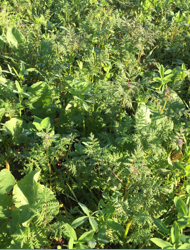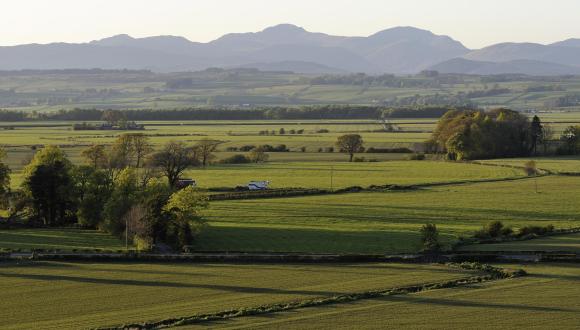Natural Capital Assessment Template - Case Study - Cover crops to improve soil condition

Background
Kirk Farm is a 150 ha arable farm where they have incorporated cover crops into their rotation to increase profitability and soil health. They have used cover crops as catch crops and as green manure, reducing their dependency on artificial fertilisers.
Approach

They gained confidence in using cover crops by trialling them in a mini-rotation, before pushing it out across the entire farm. They chose cover crops that fitted their soil and arable rotation (for example, they do not include any brassicas like mustard in the oilseed rape rotation to avoid club root).
The temperature for germination and establishment time are critical. As the growing season in Scotland is short, they broadcast seed into standing crops prior to harvest. This gives the cover crop several weeks to germinate and establish under the protection of the cash crop in a warm, moist environment. The cover crop can be grazed, crushed by a roller, or incorporated into the soil.
Cost and benefits
Cover crops in the rotation can protect soils from erosion, increase soil organic matter, cycle nutrients. This improvement in soil fertility helps to increase crop yield. Cover crops can significantly reduce nitrate leaching on land where soil would normally be left bare during winter preceding the next crop. Cover crops may also be used to provide protection against soil erosion and loss of other pollutants on land parcels that drain directly into a watercourse. Some cover crops are also good for pollinators and birds.
Please note that the benefits are a conservative, as they are solely based on reduction in fertiliser cost (which does not reflect recent spikes in fertiliser costs). They do not reflect any potential increases in yield in future years.
|
Annual Marginal Costs |
Per Hectare (£) |
|---|---|
|
Cultivation and establishment |
115.21 |
|
Cover crop mixture |
64.93 |
|
Total |
180.14 |
|
Annual Marginal Benefits |
- |
|---|---|
|
Reduced fertiliser costs in following cash crop (assume spring barley) |
14.67 |
|
AECS: Stubbles Followed by Green Manure in an Arable Rotation |
498.46 |
|
Total |
513.16 |
|
Annual Marginal Cost: Benefit |
333.02 |
AECS also supports cover crops for green manure at £498.46 per hectare of green manure created (subject to maximum hectarage claims depending on holding size). AECS also supports the creation of grass strips and water margins in arable fields to protect water courses and provide food and shelter for wildlife (at £495.62 per hectare).
Challenges
Timing is everything. If the cover crop is planted too late, then it might establish poorly. Nor should it be planted in wet fields as it would damage the soil. If the cover crop is left in the ground for too long before destroying the plants (e.g. by rolling or sheep grazing) it can make establishment of the following cash crop more difficult.
More information
- Farming for a Better Climate (2015) Use of Cover Crops
- FAS Information Note: Choosing a Cover Crop
- FAS Video Integrated Crop Management – The benefits of cover crops
- Farmers Guide (2020) Revisiting cover cropping in Scotland could be saviour in increasing weather extremes




